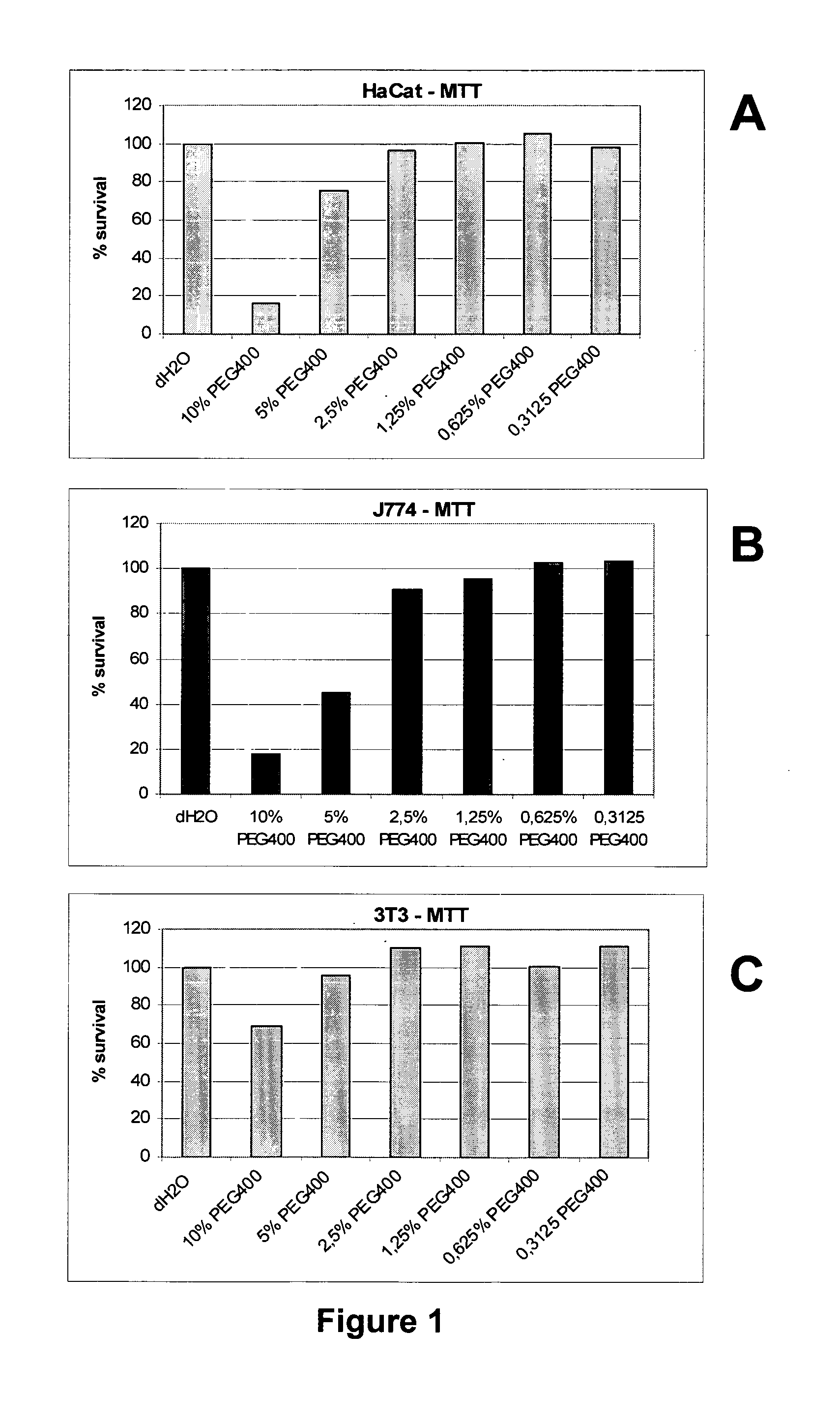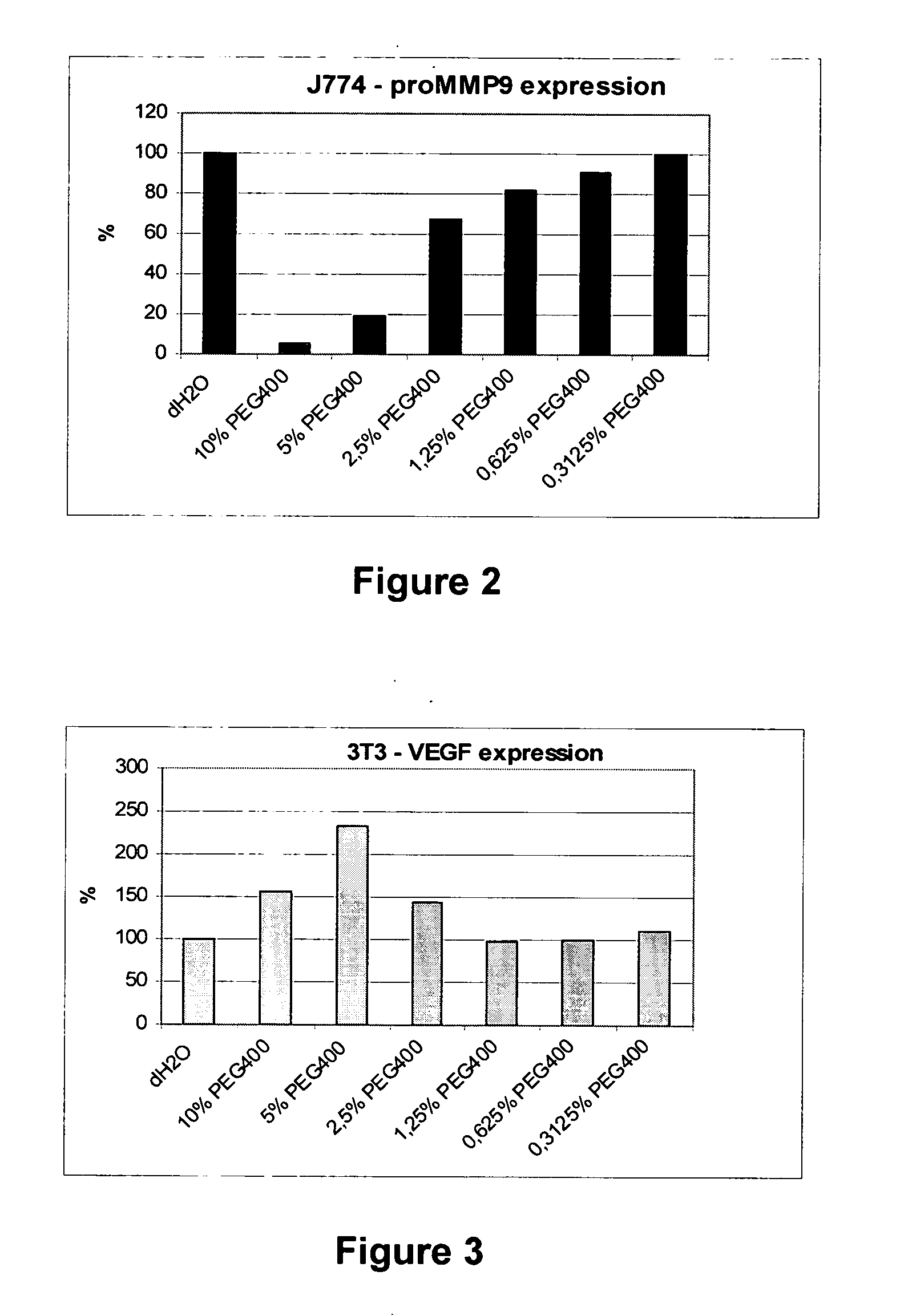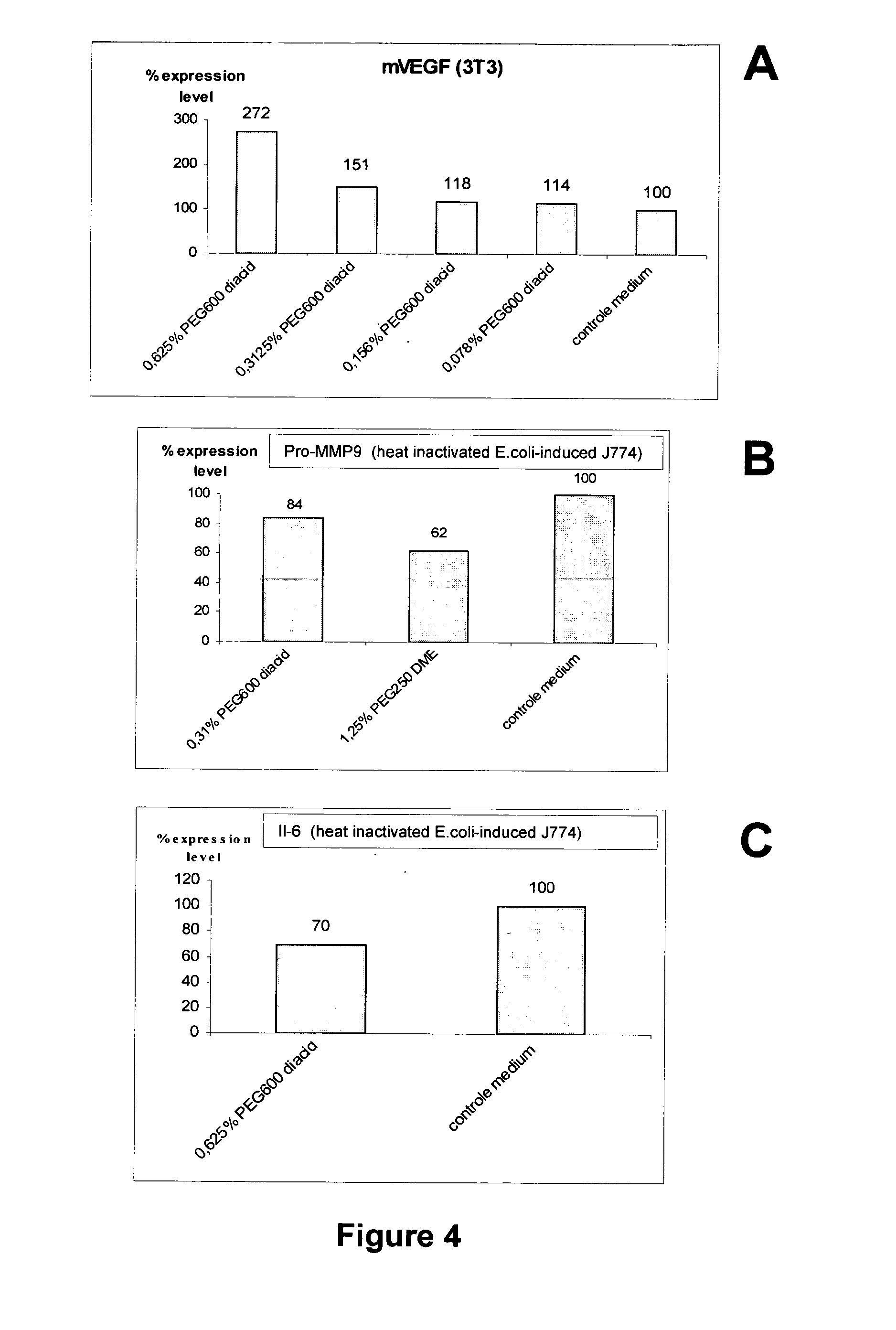Use of polyethylene glycol in inflammation related topical disorders or diseases and wound healing
a technology of polyethylene glycol and inflammation, applied in the field of use of polyethylene glycol in inflammation related topical disorders or diseases and wound healing, can solve the problems of edema or swelling, net loss of blood plasma into the tissue, nerve endings, etc., and achieve the effects of promoting and/or facilitating wound healing, reducing inflammation, and alleviating inflammation-related symptoms
- Summary
- Abstract
- Description
- Claims
- Application Information
AI Technical Summary
Benefits of technology
Problems solved by technology
Method used
Image
Examples
example 1
Toxicity of PEG on Cultivated Cells
[0085]Cells were grown in DMEM (3T3 fibroblasts and HaCat keratinocytes) or in RPMI1640 (J774 macrophages). Both media were supplemented with heat inactivated 10% Fetal Calf Serum (Sigma), 2 mM L-Glutamine (Sigma) and antibiotics (Sigma). Cells were seeded subconfluent in 96 well plates and contacted for about 16 hours with PEG test compounds which were dissolved in growth media (expressed as w / w end concentrations).
[0086]Cell survival was assayed by the conversion of soluble tetrazolium salt into an insoluble and pink colored formazan (absorption measured at 570 nm).
[0087]PEG were purchased from Sigma and are of European Pharmacopoeia or USP grade.
[0088]Cells were incubated overnight with varying concentrations of PEG 400 (0.31-10% w / w). From 5% onwards, PEG has a cytotoxic effect on in vitro cultivated cells, especially on keratinocytes (FIG. 1A) and on macrophages (FIG. 1B), and to a lesser extent on fibroblasts (FIG. 1C). Concentrations below 5...
example 2
Influence of PEG on MMP Expression
[0089]Macrophage cells were pre-conditioned for 30 min. with varying concentrations of PEG400 (0.31-10% w / w) and then challenged with heat inactivated E. coli bacteria. Next, cells were further incubated overnight. The supernatant of cells was analyzed for proMMP-9 according to the manufacturer's indications (R&D systems, Abingdon, UK).
[0090]FIG. 2 shows that secretion of proMMP9 by the J774 macrophage cell line was significantly reduced with PEG 400 concentration from about up to roughly 1% (w / w).
[0091]MMPs (matrix metalloproteinases) are extracellular proteinases that break down collagens. Although they are necessary during late stage wound healing, an increased amount of MMPs in chronic wounds or during the initial stages of wound healing is detrimental, since they rupture the freshly generated matrix. Accordingly, modulation of MMP expression is desired especially in chronic wound healing.
example 3
Influence of PEG on VEGF Expression
[0092]Fibroblasts cells were incubated overnight with varying concentration PEG 400 (0.31-10% w / w). The expression of VEGF was assayed by ELISA (R&D Systems, Abingdon, UK).
[0093]FIG. 3 shows that VEGF expression increases at PEG400 concentrations between 2% and 10% with a maximum at 5%.
[0094]VEGF is a cytokine with an important role during initial wound healing, by stimulating angiogenesis. Upon stimulation with VEGF, wounds make up granulation tissue more easily. Accordingly, upregulation of VEGF is desirable in wound healing.
PUM
| Property | Measurement | Unit |
|---|---|---|
| viscosity | aaaaa | aaaaa |
| viscosity | aaaaa | aaaaa |
| viscosity | aaaaa | aaaaa |
Abstract
Description
Claims
Application Information
 Login to View More
Login to View More - R&D
- Intellectual Property
- Life Sciences
- Materials
- Tech Scout
- Unparalleled Data Quality
- Higher Quality Content
- 60% Fewer Hallucinations
Browse by: Latest US Patents, China's latest patents, Technical Efficacy Thesaurus, Application Domain, Technology Topic, Popular Technical Reports.
© 2025 PatSnap. All rights reserved.Legal|Privacy policy|Modern Slavery Act Transparency Statement|Sitemap|About US| Contact US: help@patsnap.com



